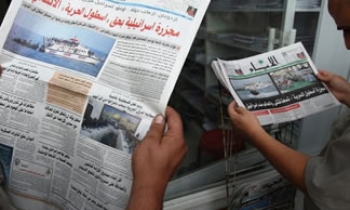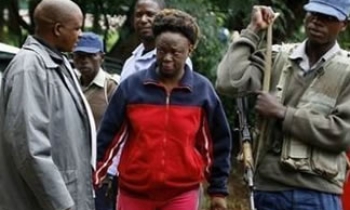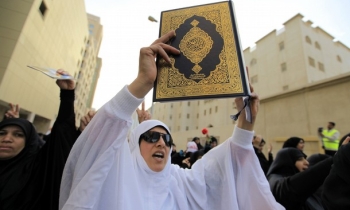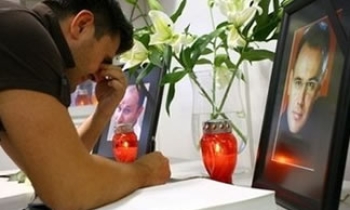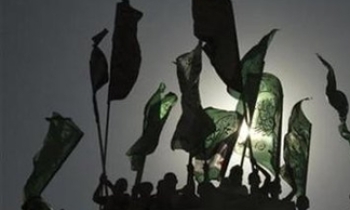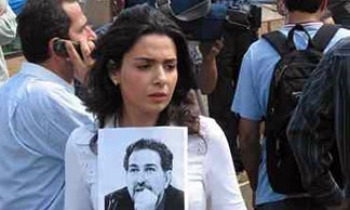Kate Webb, a brave, no-nonsense correspondent during the Vietnam War who was erroneously reported to have been captured, killed and cremated in Cambodia — only to emerge from the jungle alive —died on Sunday in Sydney, Australia. She was 64.
The cause was bowel cancer, her brother, Jeremy Webb, told The Associated Press. Ms. Webb lived on the Hunter River, north of Sydney.
On April 7, 1971, when she was Phnom Penh bureau chief for United Press International and one of a handful of women reporting on the war, North Vietnamese troops in Cambodia captured her and five other journalists and held them for 23 harrowing days.
She and the other five, a Japanese and four Cambodians, endured thirst, infection, long interrogations and other traumas, but she wrote that she had been courteously treated. The Japanese man helped allay stress by teaching her the Japanese tea ceremony.
On May 1, she was released, along with the others, and returned home with two types of malaria. A full explanation of why she was freed never appeared; other groups of journalists captured around the same time were sometimes killed or held indefinitely.
By then, The New York Times and other newspapers had published obituaries, presuming she was a woman whose cremated body had been found, and her family had held a memorial service for her. The Times remembered her both as a soft-voiced young “waif” in a striped dress and sandals on the streets of Saigon, and as a cool, incisive reporter when she put on combat boots, helmet and flak jacket to go on missions with troops.
The Times account cited her bravery in mortar and rocket attacks, in landings in disabled helicopters and in the face of the normal battlefield dangers of bullets and shrapnel. It told how she rushed back to help the wounded after an explosion knocked her flat, then wrote a moving account of the episode.
Agence France-Presse quoted Peter Arnett, who won a Pulitzer Prize for his Vietnam reporting, as saying: “Kate Webb was one of the earliest — and best — women correspondents of the Vietnam War. She was fearless as an action reporter, with a talent for the vivid phrase.”
Ms. Webb had paid her own way to Vietnam, arriving in 1967 with only a couple of hundred dollars and an old Remington typewriter. She was at first a freelancer for U.P.I. and worked her way up to be chief of the news agency’s operation in Cambodia, the post she held when she was captured.
Ms. Webb went on to cover many other major upheavals, mainly in Asia. After the fall of Saigon in 1975, she reported on the rise of the Khmer Rouge in Cambodia, the assassination of Rajiv Gandhi in India and the strife in East Timor.
She was also on hand for the ouster of Ferdinand Marcos in the Philippines, the Persian Gulf war, the Soviet occupation of Afghanistan and the turnover of Hong Kong to China.
In Afghanistan, a militiaman almost scalped her when he dragged her up the stairs by her long hair, tearing out a large clump. In India, she nearly lost an arm after a motorcycle accident.
For all her hard-drinking, chain-smoking, after-hours bravado among journalistic compatriots, her actions often revealed selflessness, even tenderness. She gave shelter to a family of Afghan refugees in her own house, then paid for the children to go to college.
Ms. Webb left U.P.I. in 1985 to work for Agence France-Presse, where she stayed until her retirement in 2001. She said she had become “too old to keep up with front-line reporting, and that was the only kind I liked.”
Ms. Webb was born in 1943 in Christchurch, New Zealand, and given the first name Catherine, which she detested. When she was 8, her family moved to Australia, where her father had been appointed a political science professor.
At 15, she was charged with first-degree murder after a schoolmate committed suicide with a rifle Ms. Webb had handed her. Ms. Webb said she had thought it was a joke, and the charges were dismissed. Then, both her parents died in a car crash when she was 18.
She said in an interview with The Times in 1972 that she had been told she woke up in the night screaming. “But I don’t know which part of my life I’m screaming about,” she said.
In 1963, she graduated from Melbourne University with honors in symbolic logic, then worked as an artist, making stained glass windows and painting.
Agence France-Presse reported that she stumbled into journalism when she was forced to pay for a stained glass window she shattered while working on it. She got a job as a secretary at The Sydney Daily Mirror, then became a reporter. The paper sent her to Indonesia to report on the crisis that followed the fall of Sukarno in 1967.
Later in 1967, she went to Saigon on her own and became a part-time correspondent for U.P.I., which hired her as a full-time staff member within six months. The Times reported that she was so dedicated that U.P.I. had trouble getting her to take periodic “rest and rehabilitation” tours outside Vietnam. On one supposed vacation, she spent 10 days living with the First Infantry Division of the South Vietnamese Army to see how it performed in action.
She also spent considerable nonworking time investigating the involvement of South Vietnamese officials in the black market, a subject that had not been fully explored. Once, after writing late at her office, she came home to find a .45-caliber bullet hole in her apartment door and the slug embedded in the wall just above her bed.
In 1969, Ms. Webb, who was briefly engaged to an American soldier, left Saigon and worked for a short time in U.P.I.’s Pittsburgh office. In 1970, she went to Phnom Penh, then became bureau chief after her boss was killed.
In addition to her brother, Ms. Webb is survived by her sister, Rachel Miller. They are the same survivors listed in her first obituaries.
Ms. Webb said in 2002 that most people thought she was tough, but that she was “a real softie.” She explained, “Hard people shatter.”

